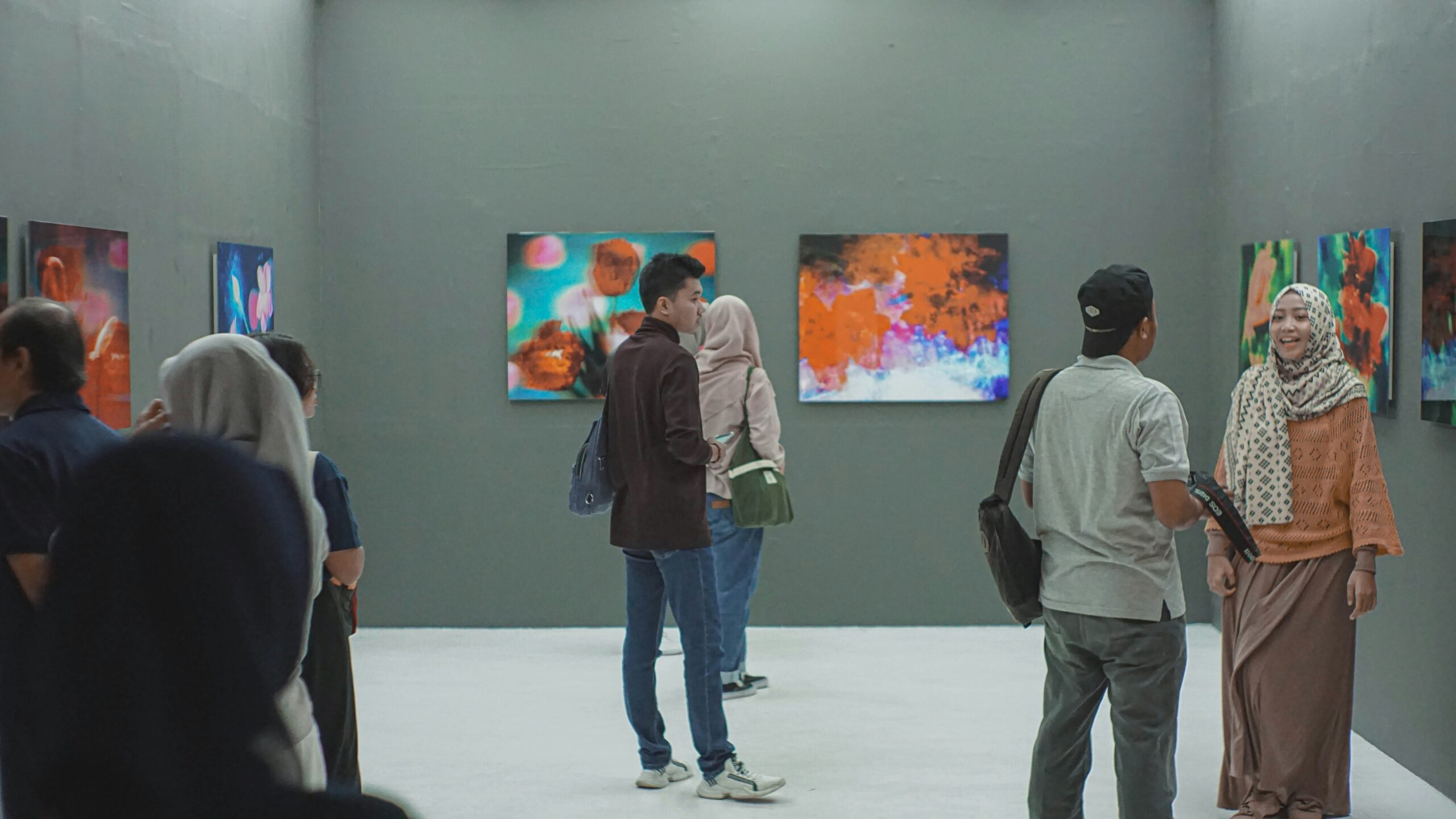In our fast-paced lives, we’re accustomed to moving quickly, scrolling through screens, and seeking information as fast as possible. But art wasn’t created for haste. Instead, art invites us to pause, to look longer, and to enter into silence. It’s in this silence that true art appreciation begins to grow.
1. Why Do We Rush When Viewing Art?
In art galleries or museums, we often see visitors quickly moving from one piece to another. Perhaps only 10–15 seconds are given to each painting. Then we move on, as if on a whirlwind tour.
We feel the need to see everything, but in the end, we don’t truly see anything.
Art is not a checklist. It’s an experience that takes time—like reading a poem, or listening to a song until its end.
2. Silence Allows Feelings to Emerge
When we slow ourselves down and stand quietly in front of a single work, something magical begins to happen.
- We start noticing small details.
- Colors appear deeper.
- Compositions feel more meaningful.
- Emotions emerge naturally.
Silence creates space for our own feelings to be present—and that is the essence of personal and authentic art appreciation.
3. Looking Longer Unlocks Layers of Meaning
A painting doesn’t always speak at first glance. It might initially seem “ordinary.” But when we sit quietly for 5–10 minutes, we start noticing things that weren’t apparent before:
- Hidden forms
- An imbalance that surprisingly feels honest
- Emotional brushstrokes
- The silence in the empty spaces on the canvas
Looking longer isn’t just about what’s there, but about what arises within us when confronting it.
4. You Don’t Have to “Understand” to Appreciate
Often, people feel awkward because they don’t know “what it means.” But art isn’t a comprehension test. Art is an invitation to feel, not to answer.
Not understanding doesn’t mean it’s not a fit. It might just be the beginning of a deeper relationship with the work.
5. Appreciation Exercise: One Piece, Ten Minutes
Try this experiment:
- Choose one artwork—it can be from a gallery, a book, or online.
- Sit quietly and look at it for a full 10 minutes.
- Don’t seek information. Don’t look for its meaning yet.
- Notice what changes in your feelings and thoughts.
Often, emotional understanding comes after silence, not before.
6. Silence Connects Us with Ourselves
Art often reflects what we’re feeling, even if we don’t realize it.
- A dark painting might make us calm precisely when we’re agitated.
- An abstract piece might feel familiar because it reminds us of a dream.
- Warm colors can embrace us without words.
Silence allows us to truly be present—both with the art, and with ourselves.
7. You Don’t Always Have to “Like” It
Art appreciation doesn’t always mean we have to like everything. Sometimes, we feel uncomfortable with a piece. That’s also part of the process. What’s important is that we take the time to feel, rather than immediately judging or dismissing. Challenging works sometimes hold the most powerful lessons.
8. Enjoying Art Like Meditation
For some, enjoying art in silence feels like a form of meditation.
- Focus on colors, forms, and textures.
- Don’t rush to comment.
- Just experience.
This practice can bring tranquility, mental clarity, and even inspiration—not just for artists, but for anyone.
9. Art as a Space of Silence Amidst the Noise
In a digital world full of notifications and opinions, art can become a sanctuary. A single painting, a sculpture, an installation piece can be a refuge—not physically, but internally.
When we give time to look, we also give ourselves time to rest from a constantly demanding world.
Conclusion: Quality of Seeing, Not Quantity of Seeing
Deep art appreciation doesn’t come from seeing hundreds of works in one day.
It arises when we give ourselves time to truly be present. By slowing down, allowing space for silence, and opening our hearts, every artwork—no matter how small or simple—can become an experience that changes the way we view the world.




